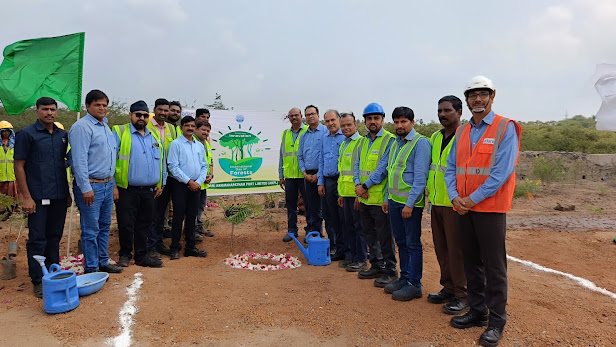
Cassia Siamea - Senna Siamea
Senna siamea also known as Kassod Tree, Cassod Tree and as Cassia tree is a legume in the subfamily Caesalpinioideae. It is native to South and Southeast Asia, although its exact origin is unknown.
It is a medium size, evergreen tree growing up to 18 m with beautiful yellow flowers. It is often used as shade tree in cocoa, coffee and tea plantations. In Thailand it is the provincial tree of Chaiyaphum Province and some places in the country are named after it. Leaves are alternate, pinnately compound, with slender, green-reddish, tinged axis and 6 to 12 pairs of leaflets on short stalks, rounded at both ends.
Synonym: Cassia arborea, Cassia florida, Cassia gigantea, Cassia reticulata, Cassia siamea
Category
- Trees
- Tropicals and Tender Perennials
Height
- 30-40 ft. (9-12 m)
Spacing
- 20-30 ft. (6-9 m)
Sun Exposure
- Full Sun
- Sun to Partial Shade
- Light Shade
Danger
- Parts of plant are poisonous if ingested
Bloom Color
- Pale Yellow
- Bright Yellow
Bloom Time
- Mid Spring
- Late Spring/Early Summer
Foliage
- Evergreen
Other details
- This plant is attractive to bees, butterflies and/or birds
- Average Water Needs; Water regularly; do not overwater
- Requires consistently moist soil; do not let dry out between waterings
Propagation Methods
- From seed; winter sow in vented containers, coldframe or unheated greenhouse
- From seed; sow indoors before last frost
- From seed; direct sow after last frost
Seed Collecting
- Allow pods to dry on plant; break open to collect seeds
Uses
- This plant has medicinal value and it contains a compound named Barakol. The leaves, tender pods and seeds are edible, but they must be previously boiled and the water discarded.
| Plant Division | Angiosperms (Flowering Seed Plants) (Dicotyledon) |
|---|---|
| Plant Growth Form | Tree |
| Lifespan (in Singapore) | Perennial |
| Mode of Nutrition | Autotrophic |
| Plant Shape | Umbrella |
| Maximum Height | 35 m |
| Maximum Plant Spread / Crown Width | 9 m to 12 m |
| Tree or Palm – Trunk Diameter | 1 m |
BIOGEOGRAPHY
| Native Distribution | From Sri Lanka, Thailand, Cambodia, Vietnam, Malesia to northern Australia. |
|---|---|
| Native Habitat | Terrestrial (Coastal Forest), Shoreline (Mangrove Forest, Sandy Beach) |
| Preferred Climate Zone | Tropical, Sub-Tropical / Monsoonal |
DESCRIPTION AND ETHNOBOTANY
| Growth Form | A deciduous tree with a girth of up to 1 m and grows to 35 m tall. |
|---|---|
| Crown | The crown is umbrella-shaped with an open crown density. |
| Foliage | Leaves are bipinnate, 30-60cm long, with 16-20 pinnae. Each pinna has 20-40 oval leaflets, each 0.8-2.5cm long and 0.4-1.0cm long. |
LANDSCAPING FEATURES
| Landscaping | It suitable for planting along streets, in parks and gardens for its ornamental flowers, and umbrella shaped crown which provides excellent shade. |
|---|---|
| Desirable Plant Features | Ornamental Flowers |
| Landscape Uses | Roadside Tree / Palm, Coastal, Shade Providing Tree / Palm, General, Parks & Gardens, Beachfront / Shoreline |
PLANT CARE AND PROPAGATION
| Light Preference | Full Sun |
|---|---|
| Water Preference | Moderate Water |
| Plant Growth Rate | Moderate |
| Rootzone Tolerance | Moist Soils, Well-Drained Soils, Saline Soils / Salt Spray, Heavy Clay Soils, Alkaline high pH Soils |
| Maintenance Requirements | Moderate |
| Propagation Method | Seed, Grafting |
FOLIAR
| Foliage Retention | Deciduous |
|---|---|
| Mature Foliage Colour(s) | Green |
| Foliar Type | Compound (Bipinnate) |
| Foliar Arrangement Along Stem | Alternate |
| Foliar Attachment to Stem | Petiolate |
| Foliar Shape(s) | Non-Palm Foliage (Oval) |
| Foliar Venation | Pinnate / Net |
| Leaf Area Index (LAI) for Green Plot Ratio | 3.0 (Tree - Intermediate Canopy) |
FLORAL (ANGIOSPERM)
| Flower & Plant Sexuality | Bisexual Flowers |
| Flower Colour(s) | Yellow / Golden |
|---|---|
| Flower Grouping | Cluster / Inflorescence |
| Flower Location | Terminal |
FRUIT, SEED AND SPORE
| Mature Fruit Colour(s) | Purple, Brown |
|---|---|
| Fruit Classification | Simple Fruit |
| Fruit Type | Dehiscent Dry Fruit, Legume / Pod |








